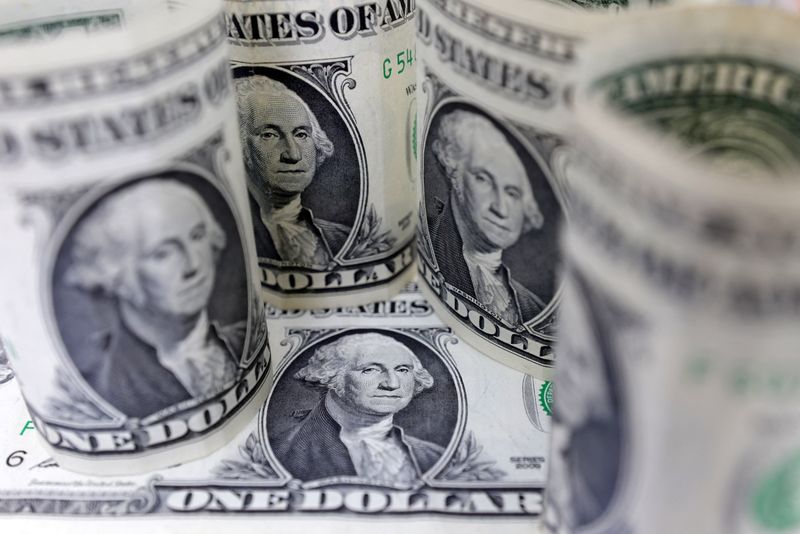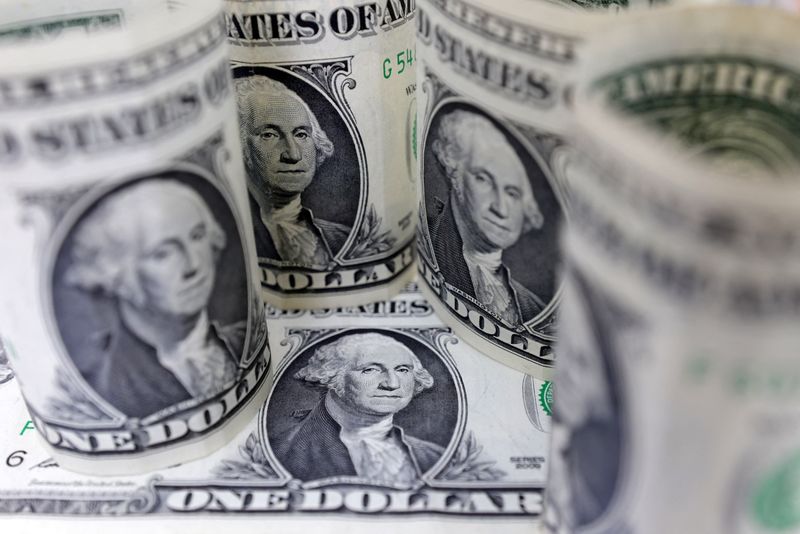Forex
Dollar drops on jobs data, yen rises from 10-month low


© Reuters. FILE PHOTO: U.S. Dollar banknotes are seen in this illustration taken July 17, 2022. REUTERS/Dado Ruvic/Illustration/File Photo
By Karen Brettell
NEW YORK (Reuters) – The U.S. dollar fell on Tuesday after data showed that U.S. job openings fell in July, as investors await more comprehensive labor market numbers in this week’s jobs report for August.
The Japanese yen also gained, after earlier falling to a 10-month low.
Job openings, a measure of labor demand, dropped 338,000 to 8.827 million on the last day of July, the lowest level since March 2021.
The data “have increased confidence that the FOMC will not increase rates at the upcoming September 19-20 policy meeting, and indeed, could be done,” noted analysts at Action Economics.
U.S. economic data has shown resilience in the face of higher interest rates, but investors are on guard for signs of any lagging impacts from the monetary tightening.
Investors have raised bets that the Federal Reserve could continue hiking rates, or keep rates higher for longer as it tries to bring inflation down closer to its 2% target while the job market remains tight.
Markets see an 87% chance of the Fed standing pat on interest rates next month, but the odds of a hike by the November meeting have risen, according to the CME Group’s (NASDAQ:) FedWatch Tool.
A November rate hike is now seen as a 47% probability, down from 62% on Monday, but up from 46% a week ago.
Fed Chair Jerome Powell said on Friday that further rate increases may be needed to cool still-too-high inflation, but also promised to move with care at upcoming meetings.
Bipan Rai, North American head of FX strategy at CIBC Capital Markets in Toronto, noted that markets are likely pricing in too many Fed rate cuts in 2024 relative to other central banks, and traders repricing this probability could boost the greenback further.
“That tells me that the dollar still has some more room to run, at least in the near term,” he said.
Against a basket of currencies, the dollar was last down 0.49% at 103.51. It is holding below the 104.44 level reached on Friday, which was the highest since June 1.
U.S. personal consumption expenditures on Thursday and the August jobs reports on Friday are in focus this week for further clues on the direction and strength of the U.S. economy.
The dollar briefly reached an almost 10-month high against the Japanese yen earlier on Tuesday, before dropping on the jobs data.
The Bank of Japan remains an outlier among global central banks with its loose monetary policy, even as it slowly shifts away from yield curve control.
“It is moving away from excessively loose monetary policy, but it’s doing so at a very slow and measured pace,” Rai said. “It’s still punitive to be short dollar/yen.”
The dollar hit 147.375 yen, the highest since Nov. 7, and was last at 145.84, down 0.47% on the day.
Traders are watching for any signs of intervention by Japanese officials to shore up the ailing currency. Japan intervened in currency markets last September when the dollar rose past 145 yen, prompting the Ministry of Finance to buy the yen and push the pair back to around 140 yen.
Charu Chanana, market strategist at Saxo, said that the intervention threat has retreated at sub-150 levels, given a lack of currency-related comments from Bank of Japan Governor Kazuo Ueda at the Jackson Hole conference and no signs of verbal intervention yet.
Euro zone inflation data due on Thursday may be key to whether the European Central Bank hikes rates at its September meeting, which in turn could set the near-term tone for the euro.
“We have the euro zone CPI report Thursday which the market is putting a great deal of weight on with the ECB’s decision in September seen as finely balanced,” said Lee Hardman, senior currency analyst at MUFG.
The euro was last up 0.49% at $1.0871. It fell to $1.07655 on Friday, the lowest since June 13.
========================================================
Currency bid prices at 3:00PM (1900 GMT)
Descript RIC Last U.S. Pct YTD High Low
ion Close Change PctCha Bid Bid
Previ nge
ous
Sessi
on
Dollar 103.51 103.9 -0.40% 0.019% +104. +103.
index 00 400 3600 4900
Euro/Dol $1.087 $1.08 +0.49% +1.46% +$1.0 +$1.0
lar 1 19 877 782
Dollar/Y 145.84 146.5 -0.47% +11.24 +147. +145.
en 00 350 % 3700 7800
Euro/Yen 158.54 158.5 +0.02% +13.00 +159. +158.
1 % 0500 2500
Dollar/S 0.8786 0.884 -0.63% -5.00% +0.88 +0.87
wiss 0 58 81
Sterling $1.263 $1.25 +0.25% +4.44% +$1.2 +$1.2
/Dollar 2 99 638 563
Dollar/C 1.3564 1.359 -0.24% +0.13% +1.36 +1.35
anadian 9 37 64
Aussie/D $0.647 $0.64 +0.72% -5.00% +$0.6 +$0.6
ollar 6 30 477 401
Euro/Swi 0.9550 0.955 -0.09% -3.49% +0.95 +0.95
ss 9 68 43
Euro/Ste 0.8605 0.858 +0.26% -2.70% +0.86 +0.85
rling 3 09 66
NZ $0.596 $0.59 +0.97% -6.02% +$0.5 +$0.5
Dollar/D 6 10 967 888
ollar
Dollar/N 10.595 10.71 -1.05% +8.05% +10.7 +10.5
orway 0 60 390 980
Euro/Nor 11.522 11.59 -0.61% +9.80% +11.6 +11.5
way 3 32 070 205
Dollar/S 10.871 10.97 -0.50% +4.45% +11.0 +10.8
weden 3 80 261 729
Euro/Swe 11.818 11.87 -0.50% +6.00% +11.9 +11.8
den 9 78 014 198

 Forex3 years ago
Forex3 years agoForex Today: the dollar is gaining strength amid gloomy sentiment at the start of the Fed’s week

 Forex3 years ago
Forex3 years agoUnbiased review of Pocket Option broker

 Forex3 years ago
Forex3 years agoDollar to pound sterling exchange rate today: Pound plummeted to its lowest since 1985

 Forex3 years ago
Forex3 years agoHow is the Australian dollar doing today?

 Cryptocurrency3 years ago
Cryptocurrency3 years agoWhat happened in the crypto market – current events today

 World3 years ago
World3 years agoWhy are modern video games an art form?

 Commodities3 years ago
Commodities3 years agoCopper continues to fall in price on expectations of lower demand in China

 Economy3 years ago
Economy3 years agoCrude oil tankers double in price due to EU anti-Russian sanctions





















